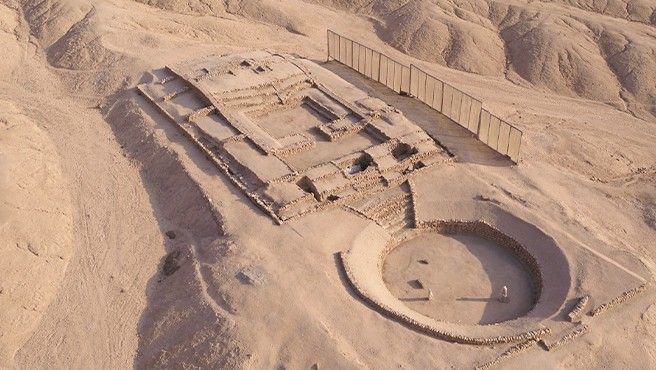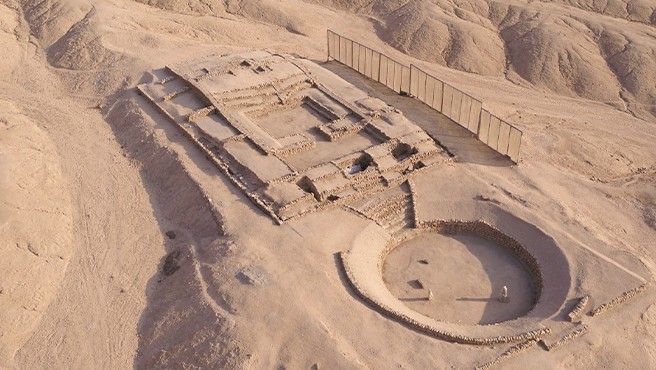
Known as Peñico, the city is now open to tourists. It was once a vibrant urban center that connected coastal, mountain and jungle communities

An aerial view of Peñico in Peru
Peru Ministry of Culture
After eight years of research, archaeologists have unveiled an ancient city in Peru that may have been a flourishing hub for trade 3,500 years ago.
Tourists can now visit the city, known as Peñico, in the country’s northern Barranca province, some 120 miles north of Lima. It was founded between 1800 and 1500 B.C.E., around the same time that early civilizations in the Middle East and Asia were developing.
The site is also located near the Sacred City of Caral-Supe, which developed 5,000 years ago in Peru’s Supe valley and is considered the oldest known civilization in the Americas. The civilization built 30 major cities and developed at the same time the ancient Egyptians were building the pyramids.
Quick fact: What will visitors see in Peñico?
Tourists will learn about the ancient site through educational materials such as dioramas, infographics and digital reconstructions.
Researchers say Peñico likely emerged when the Caral began to abandon their major urban centers after nearly 1,000 years of habitation. While the true reason for their disappearance isn’t clear, researchers think factors like climate change and internal strife may have contributed to their decline.
The establishment of a city like Peñico provides fresh insight into the continuation of the Caral civilization, as the city’s inhabitants “were situated in a strategic location for trade, for exchange with societies from the coast, the highlands and the jungle,” Ruth Shady, the anthropologist and archaeologist who led the research into Peñico, tells Reuters’ Marco Aquino and Carlos Valdez. Shady also helped excavate parts of Caral in the 1990s.
Researchers began studying Peñico in 2017 and have now identified 18 structures, including residential complexes, public buildings and ceremonial temples, according to a statement from Peru’s Ministry of Culture. Drone footage shows that the city, which lies about 1,970 feet above sea level, is still home to the ruins of stone and mud buildings.
The site is located in Peru’s northern Barranca province. Peru Ministry of Culture/https://tf-cmsv2-smithsonianmag-media.s3.amazonaws.com/filer_public/5a/09/5a09eb63-0905-40b1-ba87-eb61aba53c5b/1202921-penico-1.jpg)
In some buildings, researchers found beaded necklaces, clay figurines of humans and animals and stone tools such as hammers and anvils. The walls of a central plaza feature impressive sculptural reliefs depicting a pututu, a trumpet made from a conch shell that was used for announcing important events over long distances.
According to the statement, the area was chosen as a strategic location to protect against flooding and landslides and encourage exchange between communities.
Researchers have nicknamed Peñico the “City of Social Integration,” as its inhabitants maintained trading relations with other regions of Peru. The city connected Pacific coast communities, inhabitants of the Supe and Huaura regions, and residents of the Andes and Amazon, per the Peruvian news agency Andina.
Peñico is now the fourth archaeological site tied to the Caral civilization that’s open to the public. According to the Telegraph’s Cameron Henderson, Peñico’s ceremonial spaces will feature digital reconstructions, allowing tourists to see what the city might have looked like. The site will also be hosting a traditional Andean festival to welcome visitors on July 12.

/https://tf-cmsv2-smithsonianmag-media.s3.amazonaws.com/accounts/headshot/asia.png)






